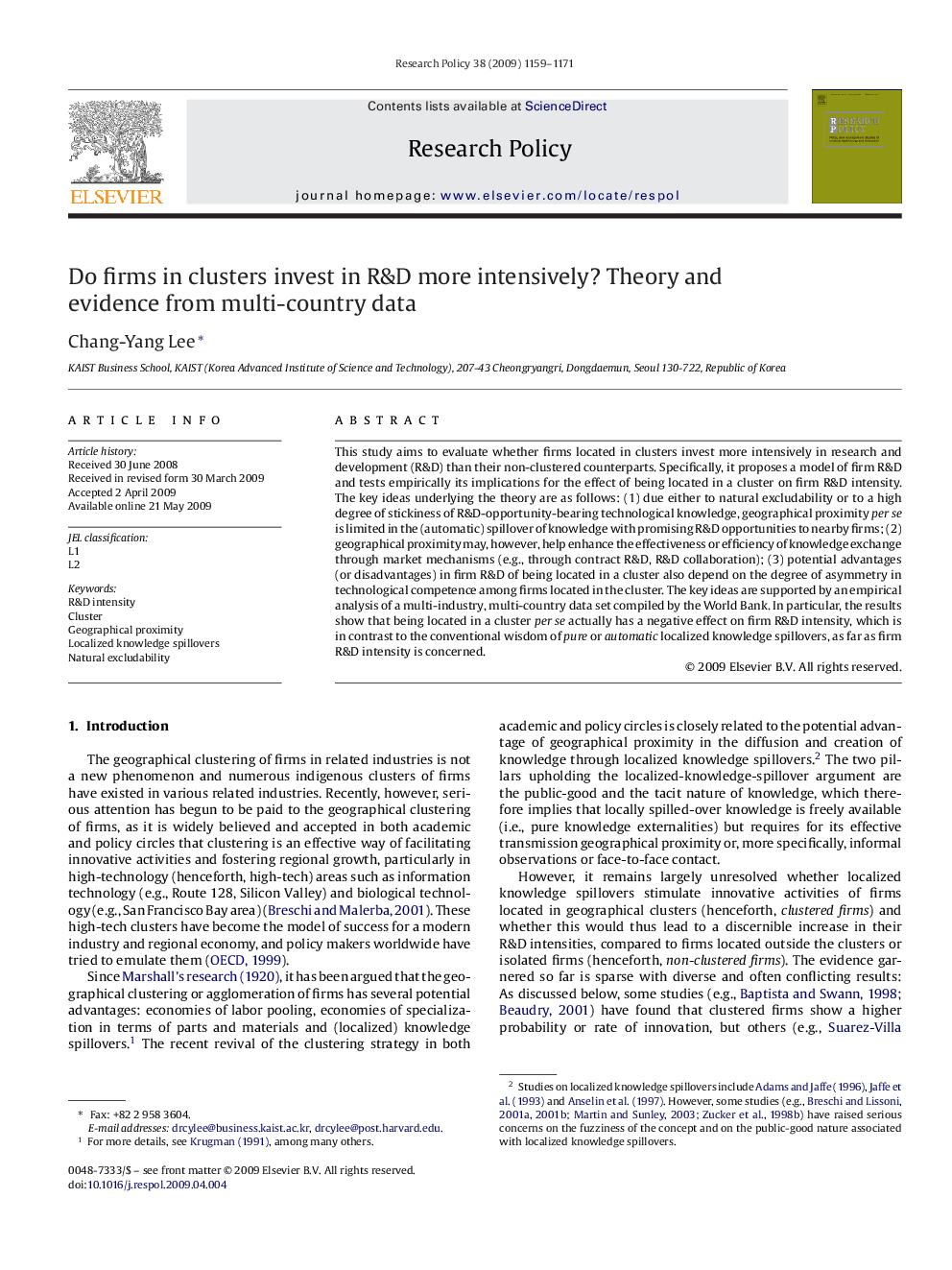| Article ID | Journal | Published Year | Pages | File Type |
|---|---|---|---|---|
| 984664 | Research Policy | 2009 | 13 Pages |
This study aims to evaluate whether firms located in clusters invest more intensively in research and development (R&D) than their non-clustered counterparts. Specifically, it proposes a model of firm R&D and tests empirically its implications for the effect of being located in a cluster on firm R&D intensity. The key ideas underlying the theory are as follows: (1) due either to natural excludability or to a high degree of stickiness of R&D-opportunity-bearing technological knowledge, geographical proximity per se is limited in the (automatic) spillover of knowledge with promising R&D opportunities to nearby firms; (2) geographical proximity may, however, help enhance the effectiveness or efficiency of knowledge exchange through market mechanisms (e.g., through contract R&D, R&D collaboration); (3) potential advantages (or disadvantages) in firm R&D of being located in a cluster also depend on the degree of asymmetry in technological competence among firms located in the cluster. The key ideas are supported by an empirical analysis of a multi-industry, multi-country data set compiled by the World Bank. In particular, the results show that being located in a cluster per se actually has a negative effect on firm R&D intensity, which is in contrast to the conventional wisdom of pure or automatic localized knowledge spillovers, as far as firm R&D intensity is concerned.
